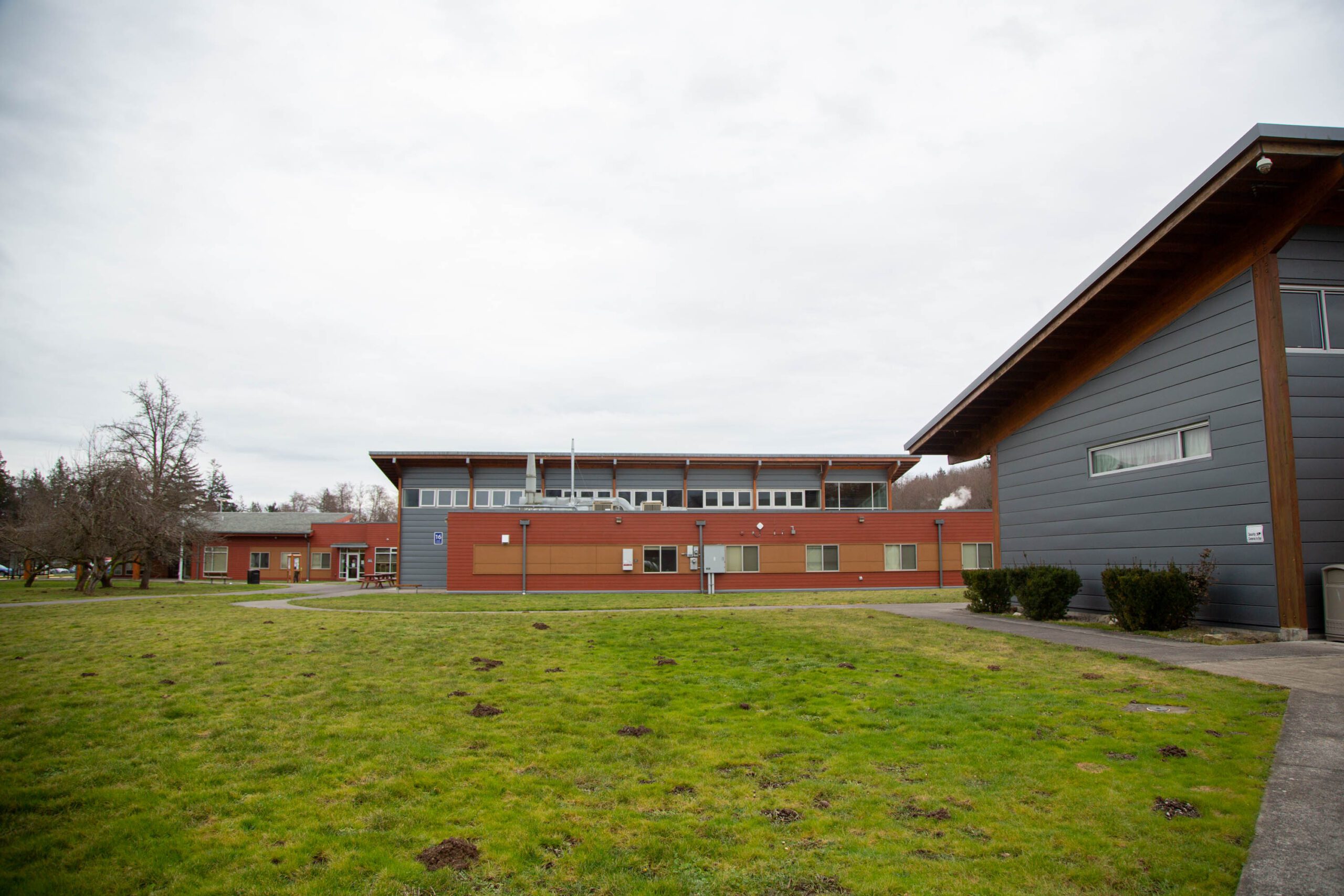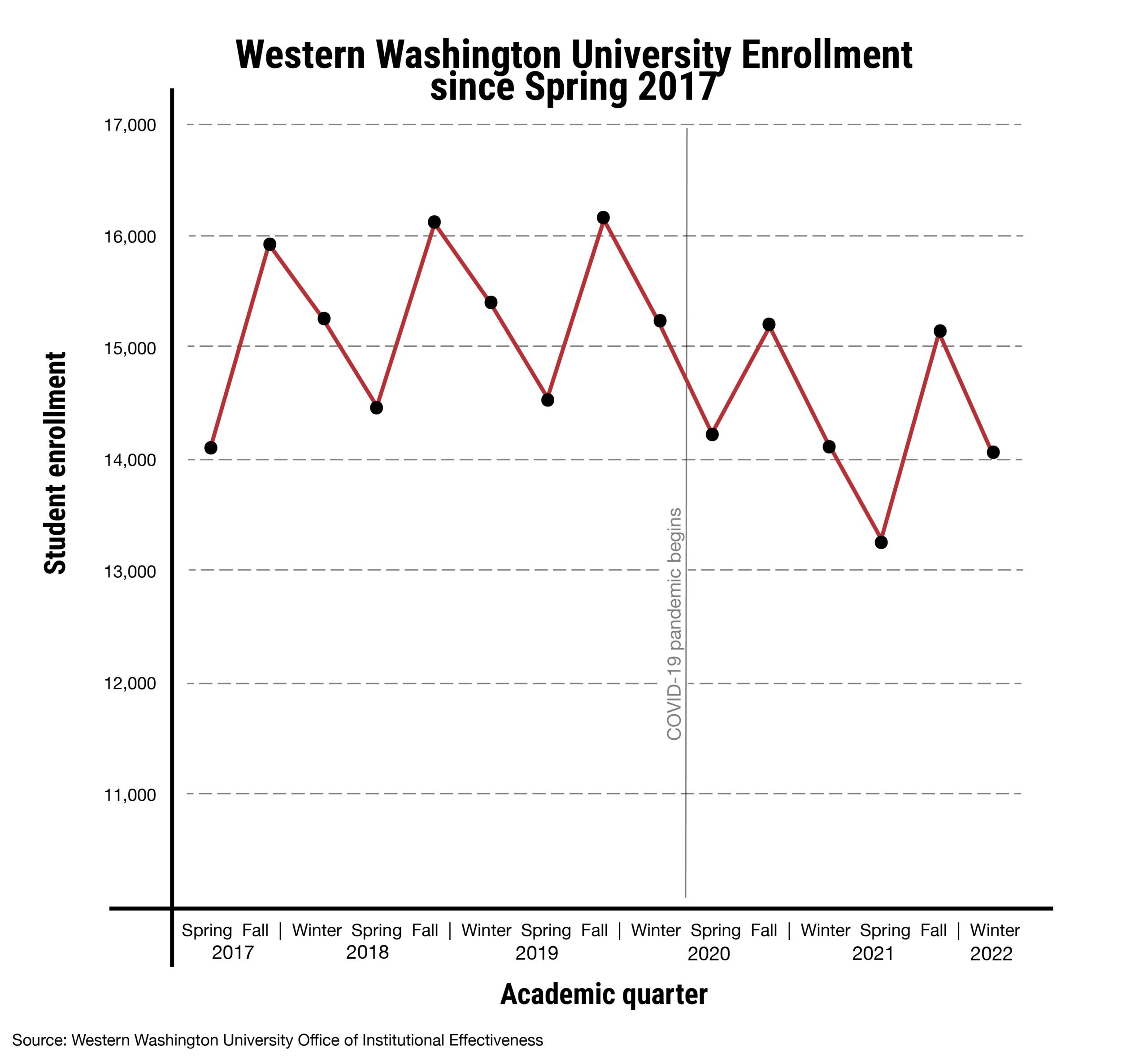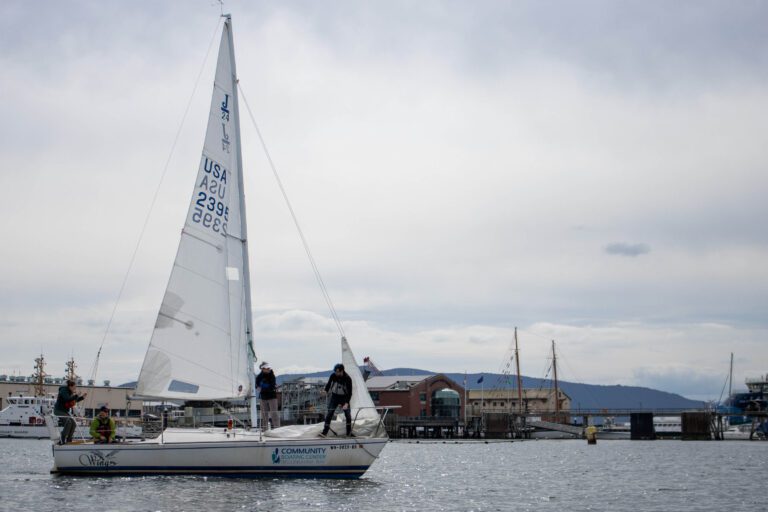While most higher-education institutions across the country have experienced a significant dip in enrollment due to the pandemic and a shift toward online education, Northwest Indian College (NWIC) has seen growth by investing in students.
Starting in summer 2021, the college indefinitely reduced tuition to $99 per credit, saving each student an average of $750 a year. They also used $1.2 million from Coronavirus Aid, Relief, and Economic Security Act funding to offer 50% tuition waivers to students exhibiting need, and to erase all student debt accrued between March 2020 and September 2021. This impacted nearly 500 students, according to NWIC.
“This is the first time NWIC has ever lowered tuition, and the enrollment was significantly impacted by that change,” Dean of Students Victoria Retasket said in an email.
Over the last few years, Northwest Indian College had experienced a steady decrease in enrollment, and the onset of the pandemic exacerbated the issue. In the 2015 academic year, the school had 786 full-time students. In spring 2020, enrollment dropped to 406. In stride with the reduction of tuition, enrollment leapt back up to 622 students in fall 2021.
“We’ve been looking for ways to save students money because that’s their primary barrier,” Retasket said.
 Northwest Indian College has seen an increase in enrollment. (Hailey Hoffman/Cascadia Daily News)
Northwest Indian College has seen an increase in enrollment. (Hailey Hoffman/Cascadia Daily News)
Nationally, undergraduate enrollment across all colleges and universities has dropped a total of 7.8% since 2019 largely due to the COVID-19 pandemic, according to a November 2021 report from the National Student Clearing House Research Center. Freshman enrollment dropped 13.1% in the same period, according to the same report.
In Fall 2019, Western Washington University had its highest enrollment with 16,142 students. The following year in Fall 2020 when school was completely online, enrollment dropped 5.8% to 15,197. Freshman enrollment dipped by 17.6% from 3,100 to 2,553.
For Fall 2021 with the return of in-person or, at least, hybrid classes, enrollment stayed the same as the year prior with 15,125 students, while freshman enrollment jumped back up to 3,015 students.
 Based on enrollment data from the last five years, Western enrollment is consistently highest in the fall and lowest in spring quarter. Trends are on par with prior years, but quarterly enrollment has reduced by approximately 1,000 students as opposed to pre-pandemic highs.
Based on enrollment data from the last five years, Western enrollment is consistently highest in the fall and lowest in spring quarter. Trends are on par with prior years, but quarterly enrollment has reduced by approximately 1,000 students as opposed to pre-pandemic highs.
“The pandemic did impact enrollment at Western, most dramatically during Fall 2020,” said Shelli Soto, Western’s associate vice president for enrollment management, in an email. “We are fortunate that our enrollment is actually showing strong signs of recovery this year and going forward.”
During the pandemic, the university received more than $18 million in funding from the federal CARES Act and the Coronavirus Response and Relief Supplemental Appropriations Act. More than $9 million was distributed to students in financial need who applied, according to two reports from the financial aid department website.
Public two-year colleges, such as Whatcom Community College, experienced an even steeper decrease in enrollment — an average of 14.8% nationwide, according to the same study. Whatcom experienced a 20% decline in full-time students from 3,712 students in Fall 2019 to 2,954 in Fall 2021.
Whatcom returned winter quarter with 36% of classes being in-person or hybrid.
To boost enrollment, Whatcom Community College said they are expanding their nursing program, creating an associate program in software development and continuing to reach out to prospective students.
The college has provided millions in financial assistance to students and is currently distributing $1,500 in emergency funds to students who have had “unforeseen expenses due to COVID-19,” Whatcom spokesperson Yvonne Cartwright said in an email.



